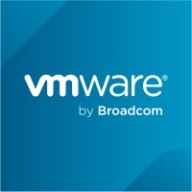

VMware Aria Automation and Spot by NetApp compete in the cloud management and optimization category. VMware Aria Automation seems to have the upper hand in enterprise robustness and system integration, whereas Spot is better in cost efficiency and dynamic resource allocation.
Features: VMware Aria Automation includes comprehensive workload automation, infrastructure management, and integrations with other VMware products for enhanced consistency across environments. Spot offers AI-driven scaling, real-time optimization, and significant cost savings, focusing on cost reduction with automation capabilities.
Ease of Deployment and Customer Service: VMware Aria Automation provides a structured deployment process supported by extensive training resources. Spot enables quicker, more straightforward deployment through intuitive tools suitable for cloud-native environments and offers responsive, knowledgeable support.
Pricing and ROI: VMware Aria Automation entails substantial initial setup costs but promises long-term ROI through operational efficiencies. Spot provides a more accessible entry point with a flexible pricing model, emphasizing cost savings from optimized cloud spend, appealing to cost-sensitive organizations.
| Product | Market Share (%) |
|---|---|
| VMware Aria Automation | 9.4% |
| Spot | 1.1% |
| Other | 89.5% |


| Company Size | Count |
|---|---|
| Small Business | 32 |
| Midsize Enterprise | 24 |
| Large Enterprise | 130 |
Spot provides dynamic workload management for cloud environments, offering cost optimization and enhanced performance. It stands out with its unique approach to managing resources efficiently.
Spot is designed to enhance cloud resource utilization and cost-effectiveness through intelligent workload management. With real-time analysis, Spot determines and deploys the most efficient resources, ensuring optimal performance for applications. Businesses benefit from reduced cloud expenses and increased operational efficiency, making it an essential tool for managing cloud infrastructure effectively.
What are the key features of Spot?In finance, Spot ensures cost-effective cloud computing for trading platforms, while in e-commerce, it dynamically manages back-end processes. In the entertainment industry, Spot optimizes media streaming by deploying resources when user demand spikes. Each industry leverages Spot to maximize performance and minimize operational costs, demonstrating its versatility and reliability across sectors.
VMware Aria Automation is a cloud management tool that allows companies to simplify their cloud experience through a modern automation platform. The solution is designed to deliver self-service clouds, multi-cloud automation with governance, and DevOps-based security and infrastructure management. It helps organizations improve IT agility, efficiency, and productivity through its various features.
VMware Aria Automation has multiple use cases that include the following:
VMware Aria Automation Features
VMware Aria Automation has various features that allow users to easily perform operations. Some of the solution's capacities include:
VMware Aria Automation Benefits
VMware Aria Automation offers its users various benefits. Some of the biggest advantages that the solution brings to companies that utilize it include:
Reviews from Real Users
Awais J., CTO/CEO at a tech services company, likes VMware Aria Automation because it saves a lot of time, provides more visibility, and has extensive automation capabilities.
An IT consultant at a government rates VMware Aria Automation highly because the product gives you flexibility to analyze and consume resources.
We monitor all Cloud Management reviews to prevent fraudulent reviews and keep review quality high. We do not post reviews by company employees or direct competitors. We validate each review for authenticity via cross-reference with LinkedIn, and personal follow-up with the reviewer when necessary.